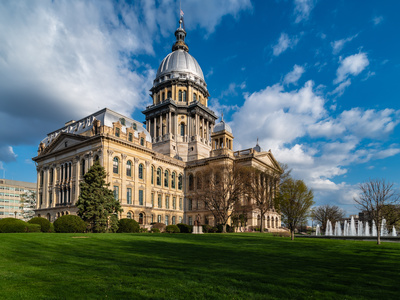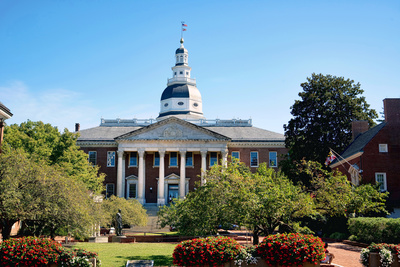
Elections & Campaigns, Tax & Budgets, Health Care & Wellness
One Big Beautiful Bill Act: How Federal Changes Will Shape State Elections
July 30, 2025 | Bill Kramer
July 7, 2020 | Bill Kramer

Key Takeaways:
After shutting down businesses and ordering residents to stay-at-home in March to combat the COVID-19 pandemic, states began phased reopenings in May as the case numbers stabilized. However, more recently, certain pockets of the country have seen an alarming increase in COVID-19 cases (even as the numbers in originally hard-hit areas like New York are decreasing). Since states remain the primary government authority stepping up to combat the COVID-19 pandemic, what policy options do states have to rein in the virus?
The most obvious option is to require certain businesses to close again and order people back into their homes. Although several states have paused their reopening process and even made minor moves to reverse reopenings (most notably closing bars again), we’re unlikely to see states move all the way to full shutdowns like we experienced in March. Fortunately, public health experts know more about the virus now and see a path to containing the spread of the virus without shutting down our entire economy. Those options include mask mandates and travel restrictions.
There is growing evidence from public health experts that wearing a mask or cloth covering around your mouth and nose will significantly reduce the spread of COVID-19, especially in indoor environments where social distancing is difficult.
In early April, a handful of cities in California, Texas, and Oklahoma mandated their residents to wear face coverings when out in public or shopping at essential businesses (such as grocery stores). New York was the first state to issue a mask mandate, but until recently the adoption of mask mandates slowed. This was primarily due to decreased COVID-19 case numbers and controversies surrounding masks becoming a politicized issue for many. For those reasons, state and local political leaders encouraged mask wearing for residents but stopped short of requiring their use.
Fast forward to July and we’ve seen a substantial increase in mask mandates at both the state and local levels. Currently, 22 states require members of the public to wear masks: 15 broadly in public spaces including outside and 7 limited to patrons at public facilities. An additional 18 states require masks for employees of certain industries. Finally, governors (e.g., Governor Ducey in Arizona and Governor Lee in Tennessee) have clarified that localities in their states may enforce their own local mask requirements.
As COVID-19 cases are on the rise again in several parts of the country, convincing more residents to wear masks is one way to help slow the spread of the virus without resorting to shuttering the economy. With that in mind, political leaders have made the tough decision to require mask wearing while inside public spaces (such as stores or government buildings).

Travel restrictions typically require anyone who enters into the state from a high COVID-19 outbreak area to self-quarantine for 14-days. States began by restricting travel from countries hit by early COVID-19 outbreaks, and then the focus shifted to where the outbreak was initially most severe in the United States (e.g., New York, Washington, Louisiana). Now we’re seeing a rise in state travel restrictions from areas where the latest outbreaks have hit (e.g., Florida, Texas, California).
A restriction on travel can be an effective tool for policymakers looking to stop the virus’ spread from areas with a high number of cases into areas with a lower number of cases. This is especially true for states that are geographically isolated already, such as Hawaii and Alaska.
Currently, 13 states have quarantine requirements if you travel from certain areas outside the state. Another 15 states have strong recommendations to self-quarantine if you enter the state from an outbreak area.

State and local political leaders may be reluctant to force businesses to close, require residents to stay home, and therefore shut down economic activity again. However, there are certain high-risk activities that states can restrict to help slow the spread of COVID-19. These include gathering in large venues (with crowds of over 50 people), bars (where narrow layouts and intoxicated patrons may be less vigilant with social distancing), and gyms (close indoor contact paired with heavy breathing and sweating).
Some states have yet to reopen these types of businesses while others, especially where case numbers are trending up, have taken steps in the past week to either pause planned reopenings or close bars and gyms again. Arizona, Florida, California, Michigan, and Colorado have all closed bars, at least in parts of the state, after previously allowing them to reopen. Arizona has also closed gyms again.
If case numbers continue to rise, we might see more high-risk activities shut down in areas where new outbreaks are occurring.
These are only three policy levers states may decide to pull if COVID-19 cases are on the rise. Other factors to consider are setting up robust testing availability, establishing contact tracing programs to isolate those that have come into contact with infected individuals, as well as the tough decision of whether to open up schools in the fall.
And keep in mind that government mandates can only go so far. Enforcement cannot be universal and leaders must impart to residents how serious these precautions should be taken and the risks — both individually and to the community — of disregarding these requirements and recommendations.
We’re tracking these issues and much more on MultiState’s COVID-19 State and Local Policy Dashboard.

July 30, 2025 | Bill Kramer

July 30, 2025 | Mary Kate Barnauskas

June 17, 2025 | Lisa Kimbrough